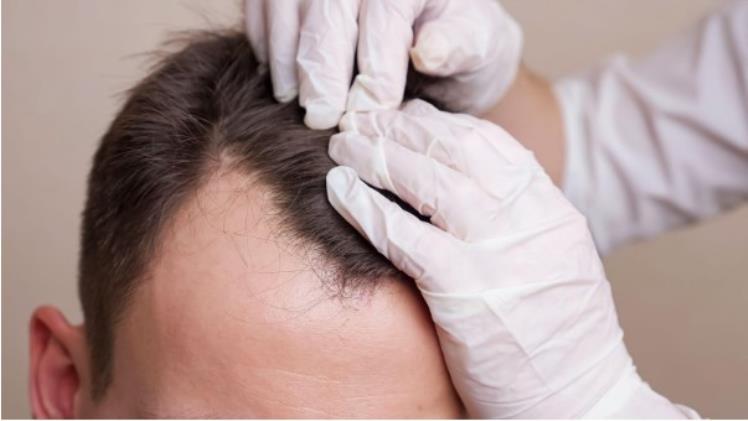Hair transplant is a pivotal solution for individuals experiencing hair loss, offering a pathway to renewed confidence and improved appearance. It involves the relocation of hair follicles from a donor area, typically at the back of the scalp, to areas with thinning or no hair. The significance of hair restoration procedures lies in their ability to provide a permanent solution to hair loss, enhancing not only aesthetics but also psychological well-being. Various Hair transplantation techniques exist, adapting to individual needs and conditions, ensuring that there’s a suitable method for nearly everyone seeking relief from baldness or thinning hair.
What is a Hair Transplant?

Hair transplantation is a surgical procedure designed to restore hair in areas where it has thinned or been lost. Common reasons for undergoing a hair transplant include genetic factors, hormonal changes, or even scarring from injuries. Several modern technologies have emerged in the field, driving advances in both efficacy and recovery time. Procedures vary, with Follicular Unit Extraction (FUE) and Direct Hair Implantation (DHI) being among the most popular. Understanding these methods is crucial for anyone considering hair restoration.
Costs Associated with Hair Transplants
When considering hair transplantation, understanding the costs associated with these procedures is crucial. The expenses can vary widely based on several factors, including the extent of hair loss, the number of grafts required, and the techniques employed. Here’s an overview of the typical costs involved in hair transplant procedures, especially in popular locations such as Turkey, known for its affordable hair restoration options.
- Cost per Graft: Prices for hair transplant grafts can range significantly. For example, in Turkey, the cost per graft can be as low as US$1.07, whereas in places like Canada, it might reach up to US$7.00 per graft. This difference illustrates the affordability of procedures in Turkey, making it a prime destination for hair transplant seekers.
- All-Inclusive Packages: Many clinics offer packages that cover the entire procedure. These packages often include initial consultations, aftercare, and sometimes additional expenses, such as travel. This comprehensive approach can make it easier for patients to anticipate the total costs involved in their hair restoration journey.
- Location Impact: The setting of the clinic is another key factor affecting pricing. For instance, costs in the UK for hair transplantation can range from £1,000 to £30,000, showing a stark contrast in international pricing structures.
- Type of Procedure: Various techniques, such as the Follicular Unit Extraction (FUE), may also influence the overall costs. Different methods come with different levels of complexity and hence varied pricing models.
- Surgeon Experience: The expertise of the surgeon has a direct correlation with the cost. Renowned surgeons with extensive experience often command higher fees due to their skills and the quality of results they deliver.
- Facilities and Support Staff: The quality and infrastructure of the clinic, including facilities and supporting staff, play a role in the total expenditure. Higher standards usually translate to increased costs.
Turkey’s booming hair restoration sector is marked by its competitive prices and effective treatments, attracting numerous patients from around the globe. The combination of experienced professionals, appealing rates, and all-encompassing care packages makes Turkey a favored choice for hair transplants.
Benefits of Hair Transplantation
Undergoing a hair transplant offers several notable benefits, making it an appealing option for many individuals grappling with hair loss. The main advantages of hair transplantation are far-reaching, affecting both physical appearance and personal confidence.
- Fuller Head of Hair: The most immediate benefit of a hair transplant is achieving a denser, fuller head of hair. This aesthetic improvement can significantly enhance one’s overall look and image.
- Improved Self-Esteem: One of the most profound impacts of hair restoration is the boost in self-esteem and confidence it provides. Many individuals feel revitalized, as a full head of hair can alter the way they perceive themselves, leading to a more positive self-image.
- Permanent Solution: Unlike temporary treatment methods such as topical solutions or medications, hair transplants offer a long-term solution to hair loss. This permanence makes it a favorable choice for those serious about addressing their baldness.
- Natural Results: When performed by skilled clinicians, the results of hair transplantation can appear very natural, as the hair follicles are taken from the patient’s own body, ensuring compatibility and appearance.
- Minimal Recovery Time: Hair transplant surgeries typically qualify as outpatient procedures, allowing patients to return home the same day and resume light activities soon after. This minimal downtime is appealing to those with busy lifestyles.
In conclusion, hair transplantation not only enhances physical appearance but also fosters improved confidence and self-esteem, making it a significant investment for many. The lasting benefits and natural outcomes further solidify its position as an effective solution for hair loss.
Steps Involved in the Hair Transplant Process
Hair transplant procedures have gained immense popularity for their effectiveness in restoring hair. The process requires careful consideration, especially during the pre-operative and post-operative phases.
Pre-operative Considerations
Before candidates undergo hair transplantation, they should engage in a thorough pre-operative assessment. This stage is crucial for ensuring eligibility and preparing individuals for the surgery. Candidates must consult with qualified clinicians to discuss their medical history, expectations, and the specific approach to hair restoration. Typically, these consultations involve a scalp examination where clinicians evaluate hair loss patterns and overall scalp condition.
Furthermore, individuals should prepare by avoiding blood thinners, smoking, and certain medications that could interfere with the procedure. This preparation helps in minimizing potential complications during the surgery. Ensuring a clear understanding of the hair transplant process, including the techniques like Follicular Unit Transplantation (FUT) or Follicular Unit Extraction (FUE), is vital. By addressing these pre-operative considerations, candidates can approach their hair transplant journey with confidence and clarity.
Post-operative Care
The post-operative care required after a hair transplant is equally essential to ensure successful recovery. Following the procedure, patients can expect some swelling and discomfort, typical responses to the surgery. Understanding the recovery journey is critical, as insights into how to care for grafted areas of the scalp can significantly impact end results.
Patients should avoid strenuous activities for at least a week after surgery and protect their scalp from sun exposure. Keeping the scalp clean is important, and clinicians usually recommend specific shampoos and medications to aid in healing. Furthermore, potential side effects, such as scabbing or hair shedding in the early recovery days, must be managed through prescribed aftercare routines. Adhering to these guidelines not only enhances the likelihood of successful hair restoration but also facilitates a smoother healing process.
Understanding the Risks and Side Effects
While hair transplantation is largely considered safe, understanding the risks and side effects associated with the procedure is crucial for potential candidates. Common risks include infection at the donor or recipient site and poor hair growth due to improper technique. Awareness of these issues empowers patients to make informed decisions.
To mitigate these risks, it is advisable to choose qualified and experienced practitioners who utilize advanced techniques. For instance, FUE is a less invasive option than traditional methods, thus reducing scar visibility and promoting faster recovery. Patients should be informed about potential side effects, such as temporary inflammation or numbness at the donor site, which usually resolve with proper care.
In essence, recognizing these risks enables candidates to prepare adequately and discuss concerns with their clinician. By doing so, individuals can enhance their overall experience with hair transplant procedures and anticipate a successful outcome.
Making the Decision: What You Should Know About FUE
The blog post offers a comprehensive guide to hair transplantation, detailing it as a surgical procedure aimed at alleviating hair loss and enhancing confidence. Hair transplants involve relocating hair follicles to areas of thinning or loss and offer permanent solutions with varying techniques like FUE and DHI, impacting cost and results. Transplants are particularly popular in Turkey due to affordability. Benefits include fuller hair, improved self-esteem, permanent results, natural appearance, and minimal recovery time. Essential to the process is pre- and post-operative care, alongside understanding risks and side effects. Choosing the right clinic and staying informed on advancements like stem cell therapies and AI in hair restoration are vital for successful outcomes.








Leave a Comment